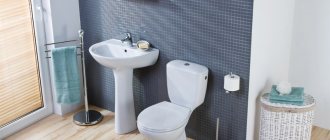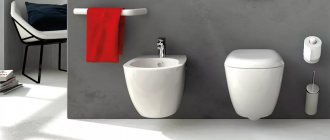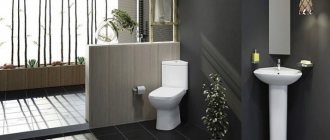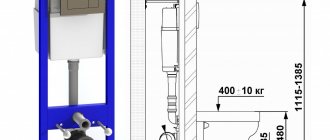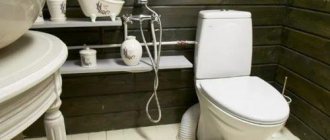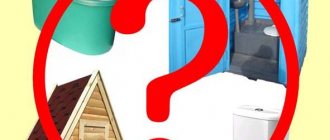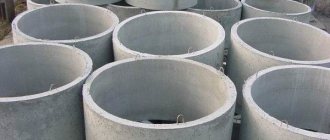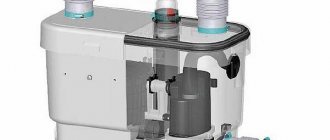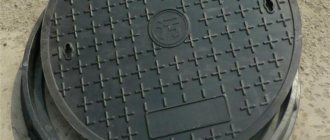Types of toilets and their classification
The first mention of a toilet with a flush cistern was in documents in 1596, when such a design was developed for the Queen of England. But this technology did not spread further than the royal chambers, since sewerage and water supply systems had not yet been developed. And only a century and a half later, developers were able to return to the idea of a barrel with a mechanical drain.
This design with a cistern owes its name to the Englishman T. Twyford, who named one of his developments Unitas, which means unity in Latin. Nowadays, toilets are distinguished according to several criteria:
- according to the shape of the bowl;
- by fastening method;
- by type of drain structure;
- according to manufacturing materials.
In addition, some parameters for toilets are standardized:
- its height should be 400 mm from the floor;
- static load should not exceed 200 kg;
- the drain tank must hold at least 6 liters of water, etc.
The listed parameters must be observed by all manufacturers, regardless of the model.
In conclusion
When choosing a toilet, you should pay attention not only to its functional features, but also to its appearance. The product must fit perfectly into the interior of the room and meet the overall design idea, since today you can find toilets of any shape and color. Naturally, for small rooms it is better to choose a compact model, but make sure that its functionality is not lost. In order not to have to run to the store for another one a couple of years after purchasing a new product, you need to pay attention to the name of the manufacturer and properly care for this plumbing device.
The article was written for the site.
Tags:Bathroom, Dressing room, Toilet
Types of bowl toilets
The bowl has always been given special attention, because it should be comfortable and functional, and most importantly, hygienic. Various manufacturers use standard geometric shapes for their products, but there are still minor differences that are not always noticeable at a quick glance.
The bowl can be:
- Funnel-shaped. One of the advantages of this design is a high level of hygiene, which is achieved due to the convenient location of the funnel in the central part of the bowl. This ensures fast and high-quality rinsing of defecation products. The disadvantages of this form include the possibility of a splash.
- Disc-shaped . This is a plane or shelf that serves to store feces. Such a structure can only be washed off or cleaned by rinsing. Such bowls, in our time, are considered a rather outdated type, largely due to low hygiene levels. This type completely eliminates splashing, which is characteristic of the funnel-shaped form.
- Kozyrkova . This design is considered the most popular and widespread. Thanks to the special protrusion, the possibility of splashing is completely eliminated. In addition, this slope, which is designed to remove waste from the walls of the bowl, is the most hygienic.
In addition, the shape of the bowl should prevent the formation of salt deposits, provide the most thorough flushing, and prevent splashing to a greater extent.
Siphon toilets - a practical new product on the domestic market
If none of the above options is suitable, pay attention to a siphon-type toilet. Such models are quite popular abroad and are increasingly found on the Russian market.
The peculiarity of this model is that when flushing, water is not supplied to the bowl, but directly to the toilet elbow. In this case, the dirty liquid goes down the drain, and the clean liquid fills the bowl. During the flushing process, a powerful whirlpool is created, sucking all waste into the drain hole.
The advantages of this option are as follows:
- water splashes when using the toilet are completely eliminated;
- The bowl is effectively cleaned by pressure; there is no need to use a brush;
- contaminants are washed off from all walls of the container.
The disadvantages include the high cost of such models and high water consumption. To remove even small contaminants, you have to drain the entire tank.
Types of flush toilets
Depending on the direction of water flow, toilet designs are divided into two types:
- direct or cascade type of flush;
- reverse circular flush type.
Direct flush device. Each of the designs has its positive and negative sides. Below we will analyze in more detail the structure of each of the flushes.
The principle of direct flushing is a one-way flow of water through the bowl. From the point of view of durability, such a flush is the most durable compared to a circular one, but the efficiency of such a flush is worse.
The advantage of toilets with this flush is its low price.
The downsides are:
- incomplete circumference of the bowl;
- noise;
- splashing.
Circular flush device. The principle of operation is to organize a circular flushing system. Streams of water move in a circle, because... initially directed at different angles. This cleaning method allows you to treat about 95% of the internal surface. In addition, the cleaning process is not accompanied by noise.
There is also a non-standard flush, which involves first filling the bowl with water and then immediately draining it. This option completely covers the entire surface of the bowl.
But it was not without its drawbacks. This is a large consumption of water, the volume of which exceeds 8 liters, when standard indicators should not exceed 6 liters.
The presence of two drain modes - full drain and economical, water costs will be halved.
Other differences depend on the location of the sewer system and the fastening of the structure.
Available types of toilet flushes
The method of draining water may differ in different toilet models. Today we have two main options available to us:
- Straight. Water is supplied in a straight stream along the rear wall. The main flow of water passes through the center of the bowl. Adjacent areas are partially captured.
- Annular. Water is supplied to a ring channel, which is located directly under the toilet rim. After filling the channel, water flows evenly over the entire surface of the bowl.
The latter option is considered more acceptable and hygienic. However, such products are much more expensive. In addition, if the water is enriched with various impurities, this type of flush is not recommended. The rim quickly fills with limescale, and red streaks form on the walls of the bowl.
Types of toilets for release into sewer systems
Depending on the type of water drainage, they come in several types:
- with vertical outlet;
- with horizontal;
- with an oblique
Therefore, the choice also depends on the sewer outlet in your premises.
Oblique and horizontal outlets have a slight difference - this is the angle of inclination, in the first case it is located horizontally, and in the second, with an oblique outlet, the angle is 40 - 45° relative to the sewer hole.
In recent years, these types of toilets have become the most popular due to the fact that sewerage is laid inside the ceilings, which are combined into a common system of vertical risers.
Let us examine in more detail each type of sewer outlet.
Oblique bend. This outlet became very popular in the 70s and 80s of the last century; toilets with such an outlet began to be used in apartment buildings. With an oblique drain, the angle of inclination is 40 - 45 degrees relative to the sewer hole.
Horizontal outlet . Most modern toilet designs are designed with horizontal drainage in mind. The outlet of the toilet is located horizontally.
Vertical outlet . This descent is most typical for buildings of the first half of the last century. This design is popular in America, this is due to the fact that communications are installed there without being attached to the walls. Therefore, this method allows you to install plumbing fixtures in any chosen location, and the pipeline is masked using finishing.
Types of drain devices
In all toilet models, the operation of the flush system is based on two actions: open the water to fill the container and turn it off at the right time, drain the water into the bowl. A fitting (or mechanism) consisting of a float, several levers and shut-off valves is responsible for performing these functions.
There are two types of toilet fittings, differing in the way the flush mechanism is activated. Namely:
- exhaust devices;
- pressure fittings.
The first variety is quite rare today. Its operation is based on raising the rod that locks the drain hole. There is a lever on the toilet cistern that must be lifted to drain the water.
Modern devices have a push-button system. It can operate in one or two modes. Single-mode fittings are designed to completely discharge water at the press of a button. Dual-mode options allow for both full and partial drainage. When you press one button, the tank is emptied halfway, and when you press another, it is completely emptied.
What materials are toilets made from?
The very first toilet was awarded a gold medal at an exhibition in London in 1884. The material for its manufacture was faience, and the seat was made of wood. Currently, the range of materials for the manufacture of plumbing products is rapidly increasing.
Let's look at the most popular materials for making plumbing fixtures. Faience. Earthenware plumbing has low strength and fairly high porosity. This makes it difficult to clean and maintain.
The use of earthenware in our time is very limited, largely due to the fragility of the material. The presence of chips and cracks is common for such products. Despite the fact that modern technologies are trying to improve the characteristics of this material, plumbing fixtures made of earthenware still lose out.
Porcelain . Porcelain structures, compared to earthenware products, have a long service life. Thanks to its smooth surface, it is easy to clean, and its durability allows it to be used not only in home but also in public toilets. The only but significant disadvantage of porcelain sanitary ware is its high cost, which is explained by high production costs.
Ceramics. Ceramic sanitary ware has become very popular, which, unlike porcelain products, is cheaper, but has a smaller layer of glaze on the surface of the bowl, greater weight and less strength.
Steel and cast iron . Classic-style plumbing fixtures are made mainly of metal. Steel and cast iron plumbing fixtures are installed mainly in public institutions where there is a large flow of people. Such sanitary ware is highly durable and is not difficult to clean. But there is also a minus, it is a high price.
Cast iron plumbing has become less popular. This is due to the heavy weight of the structure and poor resistance to mechanical stress.
Glass and stone. Glass plumbing fixtures or sanitary ware made of natural and artificial stone belong to the “modern” style. Of course, the price for such products is quite high, but the exquisite appearance is worth it. Among the disadvantages, one can highlight the weak strength of such products. The strength of artificial stone is gained through the use of artificial substitutes, which are in no way inferior to their natural counterparts.
Plastic. Thanks to modern technologies, it has become possible to produce sanitary ware from reinforced acrylic. These products have high strength indicators. In addition, caring for and cleaning them is quite simple; due to the lack of porosity of the material, such plumbing fixtures are considered the most hygienic.
But it was not without its drawbacks either. First of all, this is poor resistance to deformation; the surface does not withstand sudden mechanical stress or high temperatures.
How to choose the right toilet
Choosing a toilet is a rather delicate moment. Due to the variety of proposals, it is important to be able to choose a practical option for a particular case.
Ceramics or porcelain? Determining the best material
Aristocratic porcelain or simpler earthenware are links in the same chain - ceramics.
The differences are in composition, manufacturing technology and price. Often when the terms “porcelain” and “faience” are used separately, the word “ceramics” is used. But, in fact, both are varieties of ceramics.
Porcelain sanitary wares are more expensive. The advantage is a long period of use without changing the appearance.
Earthenware is more affordable in price, but also has a shorter service life. Additionally, it is covered with glaze, since it is more porous than porcelain.
Ceramics is a material obtained by firing clay with mineral additives and inorganic compounds to give strength to the product. In terms of the complexity of the manufacturing process, earthenware and porcelain are considered more high-tech types.
Choosing plumbing for an apartment
For apartments, the market offers both inexpensive models in standard white, as well as extraordinary options in blue, gold or blue shades. As practice shows, mounted models with installation will be more popular in the future.
Which toilet to buy for a private home
For a private home, we offer extraordinary and exclusive models made of artificial or natural stone.
Snow-white toilets with concealed wall-hung mounting will fit perfectly into a modern interior.
For connoisseurs of the classics, toilets with a standard corner flush and floor mounting option are offered.
If the main requirement is that it rinses off well
A good flush without residue of plaque, organic matter or rust is a priority for buyers. If you don’t want to waste your time cleaning the bathroom, take models with “anti-splash”. In terms of price, the options are not much more expensive, but the practicality is reasoned and justified.
Buying a toilet is only a simple task at first glance. In fact, the range offered is so diverse that to make the right purchase you need to know several important points, including both the price and the type of drain and water supply to the tank.
Methods of fixing toilets
According to the method of mounting toilets, there are:
- hanging;
- floor
Floor-standing toilets can also be divided into 2 categories:
- on simple structures (the toilet is installed on the floor);
- and wall-mounted (the toilet is installed on the floor near the wall).
Toilets with floor mounting . Toilets that are attached to the floor are cheaper and their installation is easier than wall-hung ones. Such devices are recommended for use in large toilets. To install this type of toilet, large anchor bolts are used, and the process itself does not take much time. In addition, it can be dismantled without damaging the floor covering.
If san. the unit is not large, it is more logical to use a wall-mounted type of floor-standing toilet.
Wall-mounted toilets have a specially designed flushing system, which in its compactness is in no way inferior to wall-hung models. In addition, a wall-mounted toilet can be installed in a corner of the room; this design is called a corner one. We can say that this solution is ideal for small bathrooms. nodes
Wall hung toilets. In rooms with a small area, it is best to install wall-hung toilets. The fastening system of such a toilet must withstand a load of 400 kg or more.
Among the advantages are the following:
- it is easier to clean (with a block fastening method), because there is free space under the toilet;
- When using a wall-hung toilet, there is still space for installing a bidet.
The toilet is mounted above the floor using a block or frame method. The frame method ensures rigid pinching of the suspended structure of the toilet to the wall and to the floor; usually such a structure is sewn up and a false wall is made. The necessary fittings and pipes are attached to the structure itself.
The block method involves attaching the frame to supporting structures. The mounting depth is at least 150 mm. You can save space only by installing a false wall or by installing niches made of a metal frame.
Corner toilet compact
There are models with the possibility of corner installation. As a rule, with an oblique drain.
The corner toilet is equipped with a special corner cistern. The design of the fittings inside the tank may differ from the standard one.
Installation diagonally allows you to fit comfortably in tight spaces.
If the diagonal installation is supplemented with corner shelves and a corner miniature sink, it turns out quite well.
Corner options are more expensive than regular ones; their use is advisable in very tight spaces, when, with direct installation, the legs rest against the bathroom door.
Types of toilet cisterns
There are toilets with a separate tank and a combined one.
Separate type . The water tank is installed high from the floor (most often under the ceiling) and connected to the main structure with plastic or metal pipes. A special lever is used to drain. This design was developed many years ago, but even now it does not lose its relevance, thanks to the high drain rate.
Combined type . This design involves combining the cistern with the toilet. This type of toilet is extremely popular in modern models. This is largely due to the lack of additional work on installing the tank, and less use of materials in manufacturing.
The combined type of toilets can be divided into:
- monoblock toilets;
- toilets with hidden cistern;
- toilets without a barrel.
Monoblock type toilets. This is another type of toilet with a combined tank. But at the same time, the tank is not fixed to the base of the toilet, but is cast together with the main structure.
Toilets with hidden cistern. A hidden method of attaching a cistern is used only to fulfill a design idea or to visually increase the space in small bathrooms. nodes. The tank must have a plastic body, and the installation itself can be done in different ways.
Control levers are usually brought to the surface using special extensions. Typically, such mechanisms are sold complete with this equipment.
Toilets without a tank. There are toilets without a tank; this design is flushed directly from the water supply. The operating principle of such toilets is the direct supply of water from the water supply under the control of mechanical or electronic mechanisms.
What are the types of water supplies?
Water is supplied to the drain tank either from the side or from below. The noise level when draining water from the tank depends on the type of supply.
Lower
Less common. The connection is more complicated, but the noise level is almost zero. When filling the tank, the water does not make noise or splash.
Side
Common type. The tube through which the water supply is organized is connected to the right or left side of the tank. The connection is simple, but the noise level is high.
Flexible
Flexible supply allows you to arrange the supply of a more complex system. For this purpose, rubber flexible pipes are used, additionally reinforced with metal threads.
Hard
A hard water supply involves the use of pipes made of durable steel (usually corrugated) or copper. Elements in contact with water are made of stainless steel to avoid corrosion.
